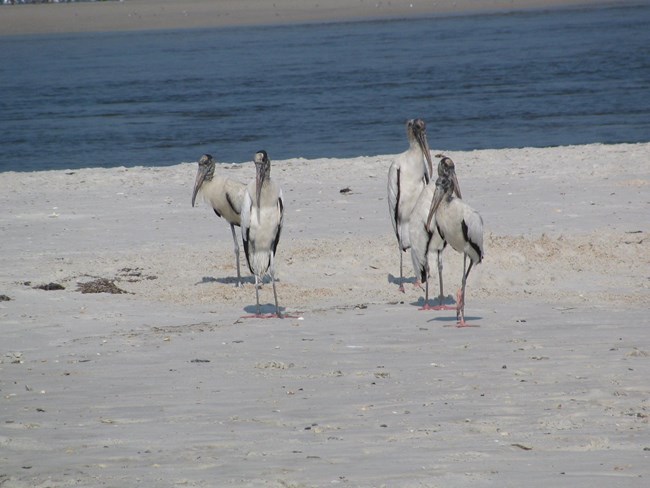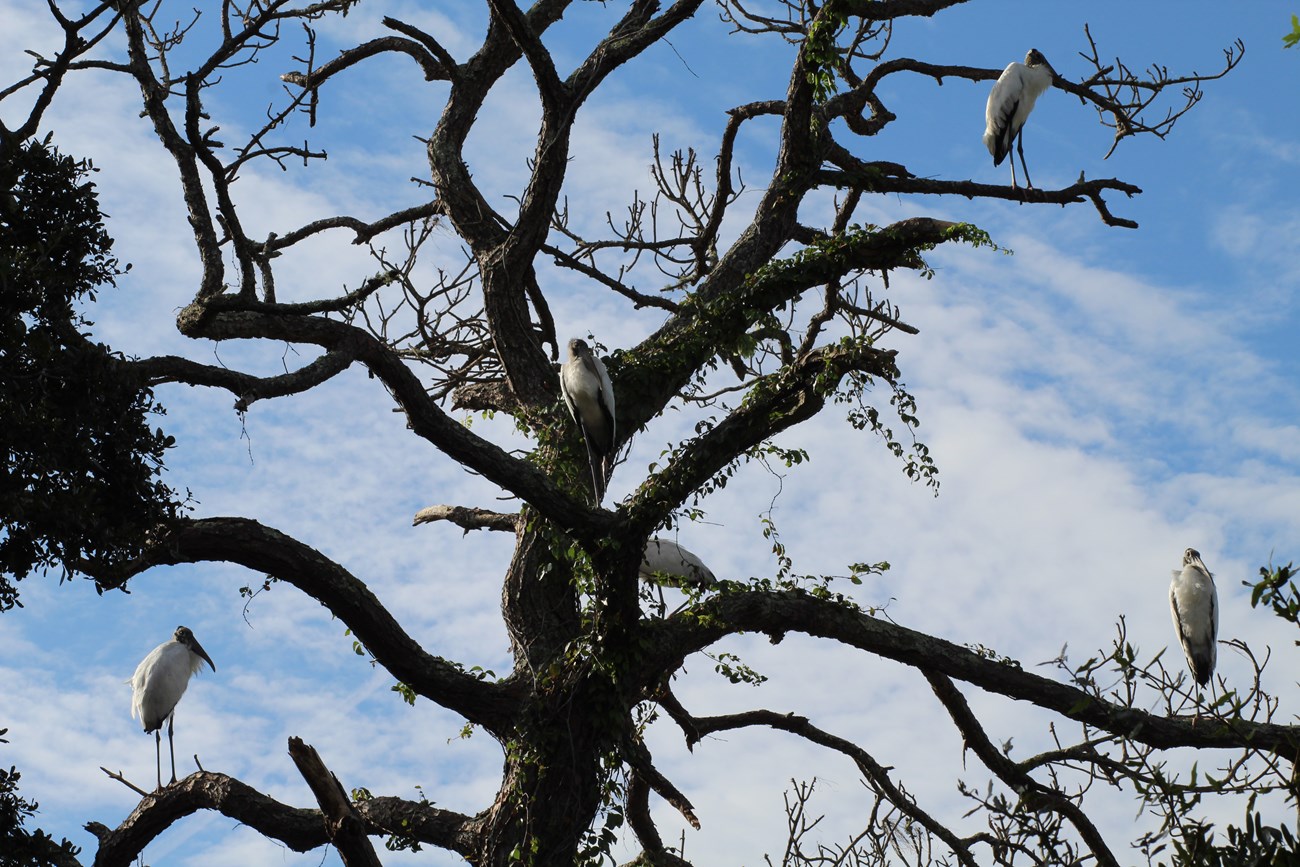
NPS (Mycteria americana) Wood storks may not deliver babies to your front door, but they are notable for being our nation's only native stork. This prehistoric looking, winged giant can seem intimidating, standing up to 45 inches tall with a wingspan of 60-65 inches, but they are much more wary of you than you may be of them. These tall birds have long white feathers with black secondary feathers that stick out at the tips of the wings and tail. They are typically bald to the neck, and have a black, thick, curved bill. When feeding they stand perfectly still in shallow water with their beaks submerged and open, waiting patiently for a minnow or other small aquatic creature to tap their beak before snapping it shut. It takes on average 25 milliseconds to snatch their prey this way, making it one of the fastest reflexes studied in birds.
The wood stork typically does not mate until three years of age. Once they’ve matured they tend to nest in large colonies called rookeries and feed in flocks. Nesting habits change depending on location. In south Florida they lay eggs in October and have fledglings by February or March. However, in northeast Florida these storks tend to lay eggs in March or April and have fledglings in July and August. Wood storks favor large cypress trees or large mangroves to build very large nests where they lay 2-5 eggs per clutch. The average fledgling rate is two out of five chicks. The wood stork is a true North American species, only nesting as far south as Mexico. The majority of the species nests in Florida, Georgia, and South Carolina, with a few popping up in Texas, Mississippi, and Louisiana. It is estimated that there are currently about 9,000 total nesting pairs.
The wood stork is a federally threatened species. In 1930 there were an estimated 60,000 pairs and thousands could be seen flying across the Florida skies. In the 1940s declines began and wood stork numbers began to fall dramatically, totaling only around 5,000 pairs by 1980. Traditionally the largest nesting site was the Florida Everglades located in south Florida. The everglades once flowed freely from Lake Okeechobee south all of the way to the Florida Bay. Due to substantial drainage of the landscape for development and agriculture, a lack of food and adequate wood stork nesting habitat resulted. Construction of canals, levees, and dikes flooded natural wetlands, making it very difficult for wading birds to hunt. A smaller but substantial threat that affected the species was the use of their feathers in plumed hats. Thousands of birds were hunted for women’s fashion.
Great strides have since been taken to protect wood storks and help the species recuperate. Scores of activists rallied together to create Everglades National Park, and continued the fight to fully protect remaining nesting colonies. Ongoing restoration projects have kept the wood stork’s needs in mind when implementing recovery strategies. The species is on the mend but still requires help mitigating the consequences of large scale urban development in Florida. 
NPS |
Last updated: July 2, 2020
